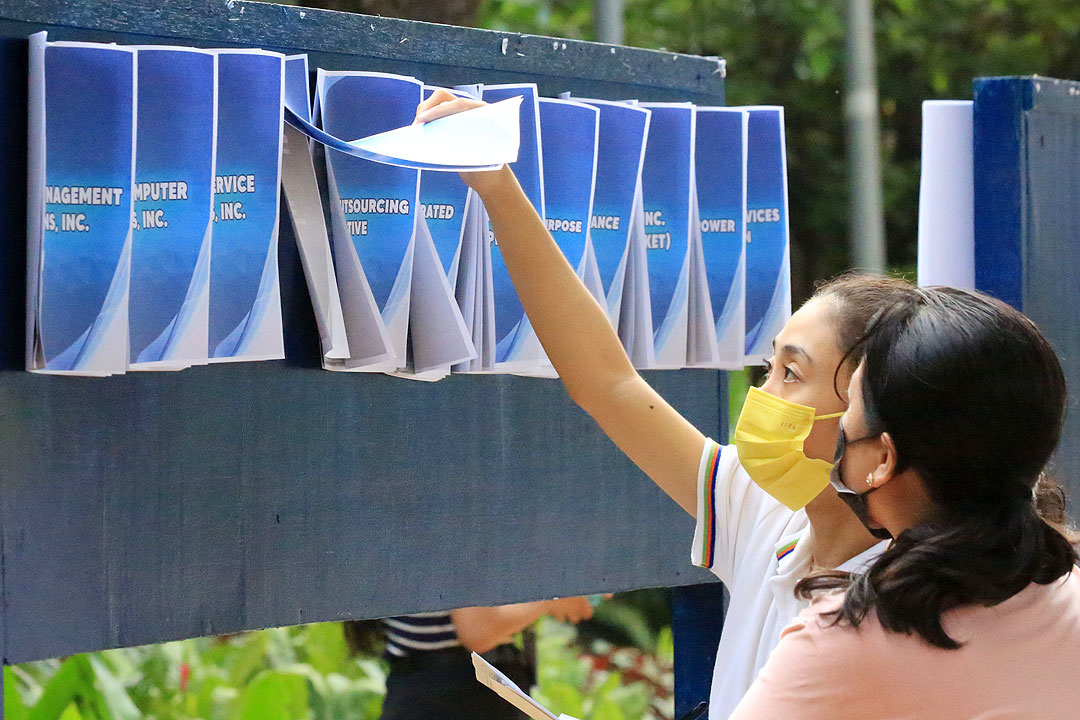PHL urged to create better jobs for youth

THE PHILIPPINES should generate better jobs for young Filipinos who bore the brunt of the “labor market shock” during a coronavirus disease 2019 (COVID-19) pandemic to strengthen economic recovery, the World Bank said.
“The unemployment rate for youth is much higher and they have been hit harder by COVID, and the recovery process is more challenging for them,” World Bank Country Director for Brunei, Malaysia, Thailand, and the Philippines Ndiamé Diop said at the launch of the Philippine Jobs Report. “So, it’s really important to support youth employment going forward. That is important for long-term growth and long-term development for the Philippines.”
Youth unemployment rate remained low in 2022 despite the recovery of the labor market to pre-pandemic levels.
At the national level, the unemployment rate rose to 4.8% in January, from 6.4% a year earlier. However, the unemployment rate among the youth went up to 10.8% from 9.5% in December.
Even before the pandemic, the World Bank said more than 60% of young Filipinos, or those aged 15 to 24, were out of the labor force in 2019. At that time, the youth unemployment rate was 13% or 2.5 times higher than the overall average.
“Young workers bore the brunt of the pandemic’s labor market shock, raising the concern of a long-term scarring effect commonly observed in previous crises,” it said.
Filipino youth or the so-called “COVID generation” had suffered triple shocks — a learning crisis due to the prolonged school closure, increased poverty, and challenging labor market conditions.
“During the pandemic, the LFP (labor force participation) rate gap between youth and prime age adults increased significantly amid overall increases in LFP. This indicates the relative struggle in labor market entry among youth, probably in part due to delayed school-to-work transitions in the context of prolonged school closure and learning loss,” the World Bank said.
In 2021 the youth labor force participation rate fell to 33% from 37% in 2020. The employment-population ratio also inched down to 0.27% from 0.32%, while the youth unemployment rate rose to 16% from 11% a year earlier.
The World Bank said few of the government’s COVID-19 measures were targeted to help the youth during the pandemic, and most were one-off support.
“Given the continuing threat from the pandemic, price spikes triggered by the war in Ukraine, and frequent disasters, strengthening labor market programs for vulnerable workers, particularly for the youth, is needed,” it said.
In the report, the World Bank said the Philippine government should provide targeted support to young Filipinos because productive young workers could help boost the economy.
“Labor regulations such as minimum wage and unemployment insurance are particularly relevant, international migration continues to be a major source of jobs and incomes, and emerging areas of green and digital jobs will provide important opportunities for the youth,” it said.
Yoonyoung Cho, the report’s lead author and World Bank senior economist, said active labor market programs for the youth such as skill training, wage subsidies and job search assistance could be strengthened with a clear approach.
“There has to be very clear target group. You cannot just introduce a program and expect the youth to come into your program. You have to be very specific about who is the target group, who is the population and what are the interests you are trying to serve and support,” she said.
The implementation of just one instrument such as wage subsidies is not enough to address the problems of the youth labor force, she added.
“The good thing is, evidence shows that the well-designed programs are particularly working very well for female and disadvantaged youth. So, the better you identify the vulnerable populations, you can create a greater impact,” she said.
David B. Bungallon, executive director for the National Institute for Technical Education and Skills Development, said one of their main objectives is to develop the youth workforce.
“In order for the youth to become employable, given the trend now, there is a need to integrate green skills (and digital skills) in the curriculum,” he said. — K.B.Ta-asan
